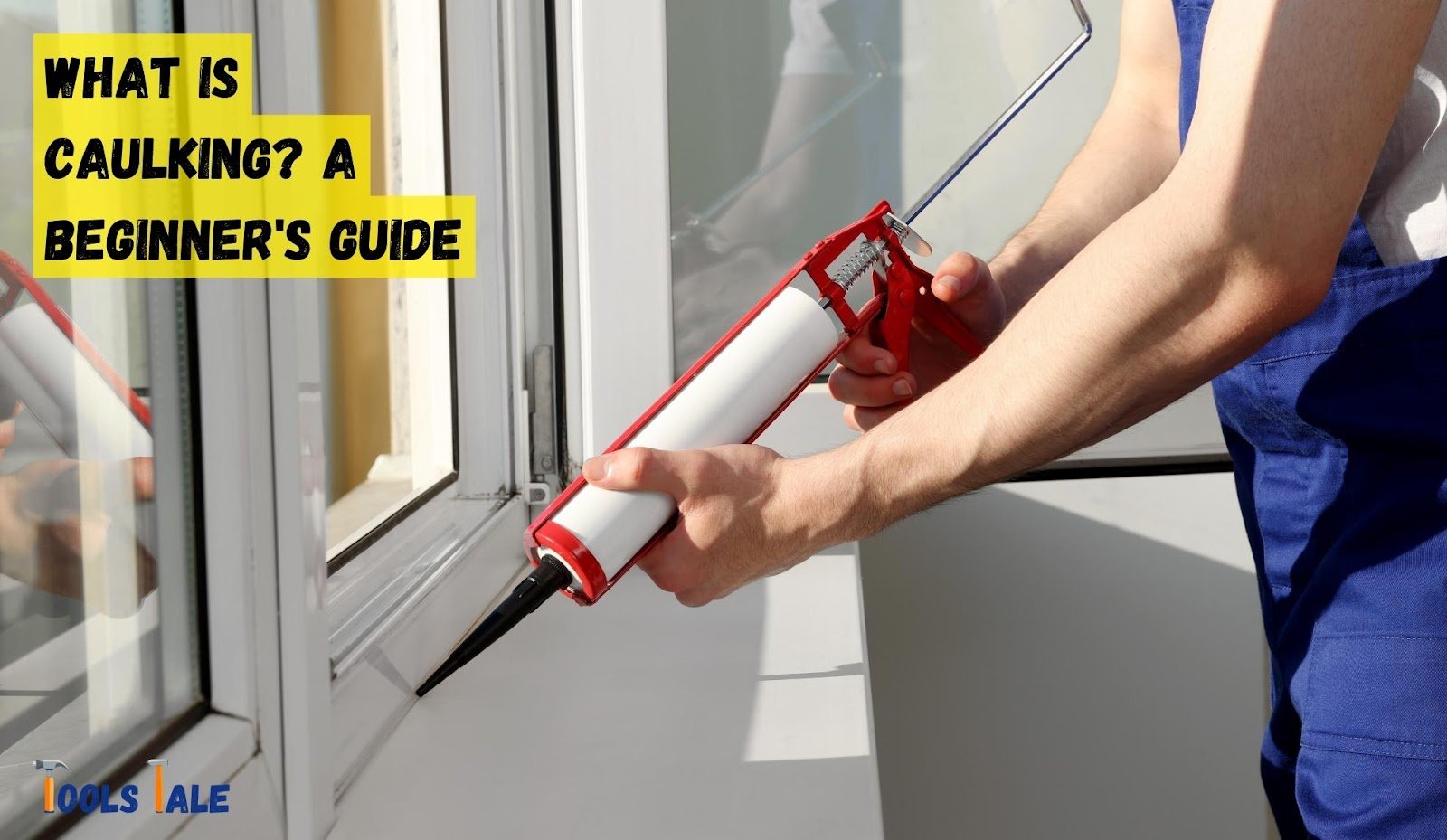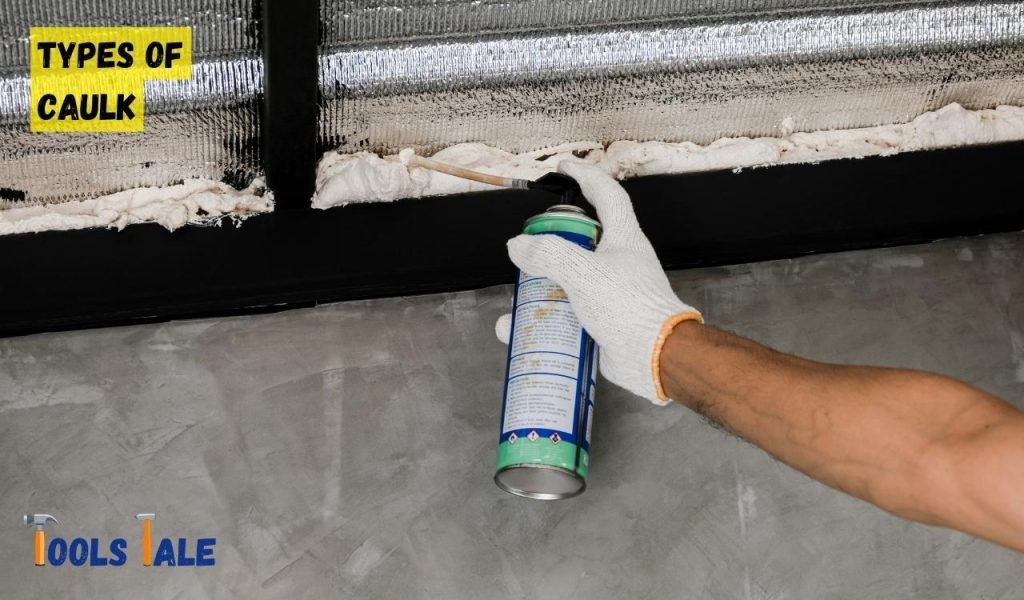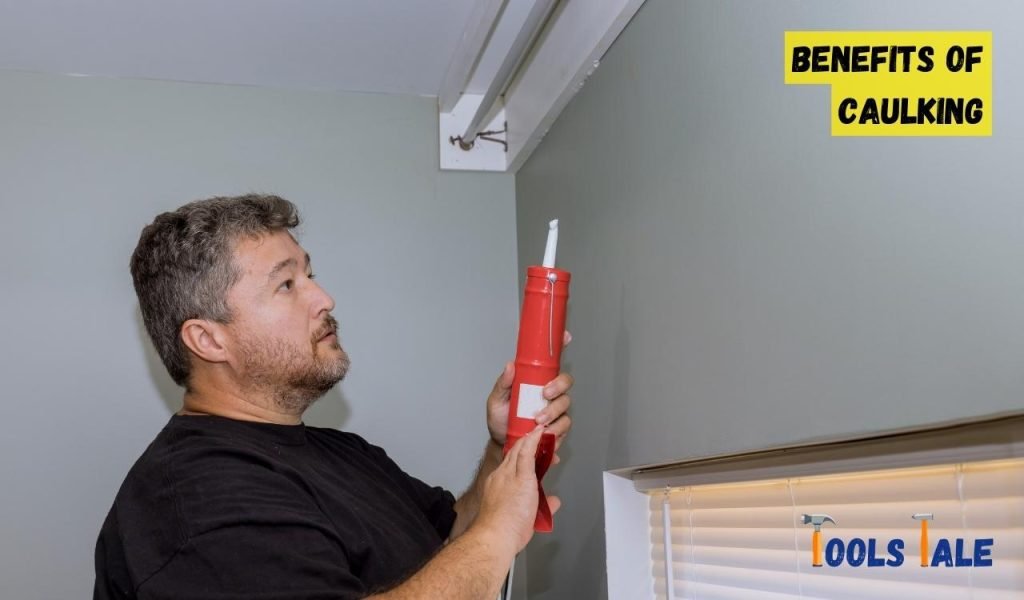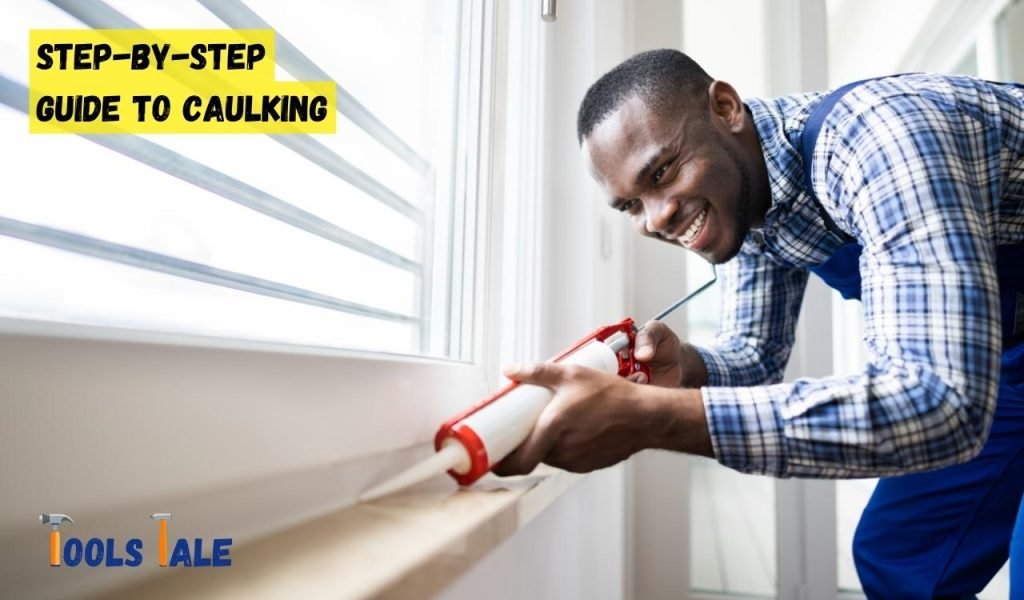Physical Address
304 North Cardinal St.
Dorchester Center, MA 02124
Physical Address
304 North Cardinal St.
Dorchester Center, MA 02124

What is caulking? Curious about this handy home improvement secret? Get ready to seal the deal with our concise guide to caulking. From how it works to the best types for your project, we’ve got you covered. Discover the art of caulking like a pro in just a few scrolls! Let’s dive in and unlock the secrets to a leak-proof and polished finish.
Key Summary: What is Caulking?
Caulking is the process of sealing gaps and joints between surfaces to prevent water, air, and debris infiltration. It forms a flexible and waterproof seal, protecting your home from damage and reducing energy costs. Learn how to master the art of caulking for a polished finish.
Caulking is a fundamental construction and home improvement practice that plays a crucial role in maintaining the integrity and longevity of buildings. It involves the application of a specialized material called caulk to seal gaps, joints, and cracks in various surfaces. This process creates a tight and impermeable barrier that prevents the intrusion of air, water, and other external elements into the building’s interior.
Caulking is a versatile solution used in both residential and commercial settings, offering a wide range of benefits. By sealing gaps and cracks, caulking helps enhance the energy efficiency of a structure. It acts as a barrier against drafts, ensuring that heated or cooled air remains inside, resulting in reduced energy consumption and lower utility bills.
Beyond its energy-saving properties, caulking also provides excellent waterproofing capabilities. By creating a watertight seal, it safeguards buildings from moisture infiltration, preventing potential water damage and the formation of mold or mildew. This is particularly vital in areas prone to heavy rainfall or moisture build-up, such as bathrooms, kitchens, and basements.
Moreover, caulking contributes to the overall indoor air quality of a building. By sealing gaps, it minimizes the entry of pollutants, dust, and allergens from the outside environment, thus promoting a healthier living or working space.
Caulking also plays a role in noise reduction. Properly sealed gaps can help minimize the transmission of sound, creating a quieter and more comfortable environment, especially in busy urban areas or near high-traffic locations.
Additionally, caulking extends the lifespan of various building materials. By preventing water damage and reducing exposure to outdoor elements, it helps maintain the structural integrity of walls, floors, and other surfaces, leading to fewer repair and replacement costs over time.

Learn about different caulking types and how they benefit structures.
Silicone caulk is a widely-used and versatile type of caulk known for its exceptional flexibility and durability. It is a popular choice for areas exposed to high levels of moisture, such as bathrooms, kitchens, and outdoor applications.
Silicone caulk forms a strong, watertight seal that can withstand extreme temperatures and weather conditions. Its resistance to mold and mildew makes it ideal for damp environments.
Acrylic caulk is a user-friendly option appreciated for its ease of application and paintability. It adheres well to various surfaces, including wood, drywall, and concrete.
Acrylic caulk dries relatively quickly and can be easily painted over, making it a preferred choice for interior projects where aesthetics are important. However, it is not recommended for use in areas with constant exposure to water, as it may not hold up well against moisture over extended periods.
Similar to acrylic caulk, latex caulk is water-based, making it easy to clean up with water and soap. It is commonly used for interior applications where minimal expansion and contraction are expected.
Latex caulk is paintable and offers good adhesion to various surfaces. However, it is best suited for areas with low moisture levels, as excessive exposure to water may cause it to deteriorate over time.
Butyl rubber caulk is a heavy-duty caulk primarily used for exterior applications. Its exceptional adhesive properties make it an ideal choice for sealing joints in roofing, gutters, and siding materials.
Butyl rubber caulk is highly resistant to outdoor elements, including UV radiation and extreme weather conditions. Its longevity and ability to remain flexible over time contribute to its popularity in demanding outdoor projects.
Polyurethane caulk is a premium-grade option known for its outstanding durability and flexibility. It adheres well to a wide range of materials, including metal, wood, and concrete. Polyurethane caulk is suitable for both interior and exterior applications and excels in areas that require a long-lasting, weather-resistant seal. However, it has a longer curing time compared to other types of caulk.
Hybrid caulks combine the best features of different caulk types to offer enhanced performance. These caulk formulations may include a combination of silicone, polyurethane, and other materials. Hybrid caulks are known for their excellent adhesion, flexibility, and durability, making them suitable for various indoor and outdoor applications.

Caulking offers a multitude of advantages that go beyond mere structural integrity. Understanding the diverse benefits of caulking can highlight its importance in construction and home maintenance:
By sealing gaps and cracks, caulking acts as a barrier against air infiltration, effectively preventing drafts and heat loss during colder months. Similarly, it keeps cool air inside during hot weather, reducing the strain on HVAC systems and leading to lower energy consumption. This improved energy efficiency translates to reduced utility bills, providing long-term cost savings.
Caulking’s exceptional waterproofing properties make it an invaluable solution for areas prone to moisture exposure. By creating a tight seal, caulking prevents water from seeping into walls, ceilings, and floors, thus safeguarding structures from water damage and potential mold growth. This is especially crucial in bathrooms, kitchens, and basements, where water intrusion can cause significant harm over time.
Sealing gaps and joints with caulking significantly improves indoor air quality by minimizing the entry of pollutants, allergens, and dust from the outside environment. This is particularly beneficial for individuals with allergies or respiratory conditions, as well as for maintaining a clean and healthy living or working environment.
Properly sealed gaps contribute to a more comfortable indoor environment by reducing drafts and maintaining a consistent temperature throughout the building. Additionally, caulking helps minimize noise transmission, creating a quieter and more peaceful living or working space. This is especially important for urban settings or areas with high levels of external noise.
Caulking protects building materials from the detrimental effects of moisture, which can lead to rot, decay, and structural damage over time. By forming a reliable seal, caulking enhances the longevity of walls, floors, and other surfaces, reducing the need for frequent repairs and replacements.
Beyond its functional benefits, caulking contributes to the aesthetic appeal of a building. It provides a clean and finished look by concealing gaps between surfaces, such as baseboards and walls. Additionally, caulking helps maintain building integrity by preventing water infiltration that may compromise the structural soundness of a property.
Caulking’s versatility allows it to be used in various projects, from sealing gaps around windows and doors to filling cracks in concrete and masonry. Whether for indoor or outdoor applications, caulking proves to be a reliable and indispensable solution for numerous construction and maintenance tasks.
Caulking finds extensive application in various aspects of construction and home improvement, offering practical solutions and enhancing the overall performance of structures. Some of the key uses of caulking include:
Caulking is commonly employed to seal gaps and joints around windows and doors, ensuring a tight and weather-resistant seal. By preventing air and water infiltration, caulking enhances energy efficiency and provides protection against drafts and moisture.
In bathrooms and kitchens, caulking plays a crucial role in creating waterproof seals around sinks, bathtubs, showers, and countertops. These areas are prone to frequent water exposure, making caulking essential for preventing water damage and potential mold growth.
Caulking is indispensable for maintaining the integrity of a building’s exterior. It is used to seal gaps in siding, trim, and roofing materials, protecting against the damaging effects of weather elements such as rain, wind, and UV rays.
Caulking is applied to fill gaps between baseboards and walls or crown molding and ceilings, providing a polished and finished appearance. It not only enhances aesthetics but also prevents dust and debris from accumulating in these crevices.
For concrete and masonry structures, caulking is used to seal cracks and gaps, preventing water seepage and preserving their structural integrity. This is especially important in areas susceptible to freeze-thaw cycles, as water infiltration can lead to cracks and damage over time.
Caulking is commonly applied in expansion joints, accommodating the natural movement of building materials caused by temperature changes and settling. By providing a flexible seal, caulking prevents the development of cracks and ensures the longevity of these joints.
Caulking is used around HVAC vents, electrical conduit entries, and plumbing penetrations to seal gaps and prevent air or water leaks. This enhances energy efficiency and protects against potential water damage.
In soundproofing applications, caulking is employed to seal gaps and reduce noise transmission between rooms. By blocking sound pathways, caulking creates a quieter and more peaceful indoor environment.
Caulking plays a crucial role in firestopping applications, where it is used to seal gaps and joints to prevent the spread of fire and smoke between compartments in a building. This enhances fire safety and containment measures.
Caulking is utilized for outdoor sealant and repair work, such as sealing gaps in outdoor furniture, garden structures, and wooden decks. It provides weatherproofing and protection against moisture and decay.

Learn how to caulk like a pro with this comprehensive guide, from preparation to smooth finishing techniques.
Before you begin the caulking process, gather all the essential tools and materials to ensure a smooth and efficient application. You will need a caulk gun, a tube of caulk (choose the appropriate type for your project), a caulk removal tool or utility knife, a damp cloth for clean-up, and painter’s tape (optional) to create clean edges.
Proper surface preparation is crucial for the success of your caulking project. Ensure the area you plan to caulk is clean, dry, and free from dust, debris, and old caulk. Use a caulk removal tool or utility knife to carefully remove any existing caulk or sealant from the joint or gap. Clean the area thoroughly using soap and water or a mild cleaning solution, and let it dry completely before proceeding.
Using a utility knife, cut the tip of the caulk tube nozzle at a 45-degree angle. The size of the nozzle opening determines the amount of caulk that will be dispensed. For smaller gaps, cut the nozzle closer to the tip; for larger gaps, cut further back. Start with a smaller opening and trim more if necessary.
Insert the caulk tube into the caulk gun with the nozzle facing outward. Ensure the plunger is at the back of the caulk tube, ready for dispensing. Squeeze the trigger of the caulk gun until a small amount of caulk appears at the nozzle’s tip, indicating that it is loaded and ready for use.
Hold the caulk gun at a 45-degree angle to the joint or gap you wish to fill. Begin dispensing the caulk slowly and steadily along the length of the gap, making sure the caulk adheres to both sides of the joint. Keep a consistent pressure on the caulk gun’s trigger to maintain an even flow of caulk.
For precise and clean edges, you may use painter’s tape to mask off the areas around the joint or gap before applying the caulk. Apply the tape along the edges, leaving a small gap for the caulk line. Once you have finished caulking, carefully remove the painter’s tape while the caulk is still wet for a neat finish.
After applying the caulk, use a caulk smoothing tool or a damp finger to smooth the caulk line, ensuring a clean and professional look. Smooth the caulk along the entire length of the joint, pressing gently to create a uniform seal. If using your finger, keep it damp to prevent sticking.
Before the caulk dries completely, clean up any excess caulk or smudges using a damp cloth. Wipe off any caulk that may have accidentally spread onto adjacent surfaces or your tools. This will leave you with a tidy finish and prevent any caulk from hardening in unwanted areas.
The curing time for caulk varies depending on the type and brand. Follow the manufacturer’s instructions to determine the appropriate curing time for your chosen caulk. Avoid touching or disturbing the caulk during this period to ensure a proper and long-lasting seal.
After the caulk has cured, inspect the caulking job to ensure it is properly sealed and free from any defects. Periodically check the caulked areas for signs of wear, cracking, or separation, and address any issues promptly to maintain the effectiveness of the caulk. Regular maintenance and timely repairs will extend the lifespan of the caulking and keep your surfaces well-protected.
Ensure a successful caulking project by avoiding common pitfalls. Learn what not to do for a flawless seal.
Avoid applying excessive caulk when filling gaps or joints. Overfilling can lead to unsightly results and may cause the caulk to bulge or crack over time.
Do not apply caulk over areas with existing mold or moisture issues. Caulking over mold will not address the underlying problem and can lead to further damage.
Avoid mixing different types of caulk in the same project. Different caulks have varying properties and may not adhere or perform well when combined.
Proper surface preparation is essential for successful caulking. Skipping cleaning or removing old caulk can compromise adhesion and durability.
Avoid applying caulk over painted surfaces, as it may not adhere properly. Remove any paint within the caulk area for better adhesion.
Caulk performs best under specific temperature and humidity conditions. Avoid caulking in extreme temperatures or high humidity to ensure proper curing.
For deep or wide gaps, avoid filling them entirely with caulk. Use backer rods to fill the space partially before applying caulk for better adhesion and flexibility.
Select caulk based on the specific application and environmental conditions. Using the wrong type may lead to premature failure or reduced performance.
For larger structures, such as buildings or bridges, pay attention to expansion joints. Avoid caulking over expansion joints, as they need space to accommodate movement.
Take your time when caulking to ensure a neat and professional finish. Rushing may result in uneven lines and sloppy workmanship.
Maintain the integrity of caulked areas with regular inspections and proper care. Learn how to extend caulk lifespan effectively.
To ensure the longevity and effectiveness of caulking, perform regular inspections. Check caulked areas for signs of wear, cracking, or separation. Address any issues promptly by recaulking or making necessary repairs.
Keep caulked surfaces clean and free from dirt, debris, and mold. Regularly clean caulked joints using a mild cleaning solution or soap and water. This prevents the build-up of contaminants that can compromise the caulk’s performance.
If you notice damaged or deteriorating caulk, promptly remove and replace it. Proper caulk repair ensures continued protection and a longer lifespan for sealed areas. Remove old caulk carefully before applying new caulk.
Understand that caulk has a limited lifespan. High-quality caulk can last from 5 to 10 years, depending on environmental conditions and the type of caulk used. Plan for regular maintenance and recaulking as needed.
Opt for durable caulk with good adhesion and flexibility. High-quality caulk is more likely to withstand weather exposure, temperature changes, and building movement, prolonging its effective lifespan.
Consider external factors that may affect caulk’s lifespan. Harsh weather conditions, excessive UV exposure, and high humidity can impact the caulk’s performance. Use caulk designed for specific environmental conditions.
Follow the manufacturer’s guidelines for proper caulk application and curing. Correct application and adequate curing time are essential for the caulk to form a strong and lasting seal.
As caulk ages, it may lose its flexibility and effectiveness. Plan to re-caulk areas periodically, especially in high-traffic or exposed locations, to maintain a reliable seal and prevent water infiltration.
For exterior caulking, inspect and maintain the caulking around doors, windows, and other openings. Caulk around these areas can deteriorate more quickly due to exposure to the elements.
For critical areas, such as firestopping or structural joints, consider professional inspection and maintenance. Contractors or specialists can ensure the caulk is in good condition and provide necessary repairs.
Selecting the right caulk is crucial for successful sealing projects. Explore these best practices to make informed caulk choices.
Select caulk based on the specific application and the materials you are working with. Different caulks are designed for various surfaces and purposes. For example, silicone caulk is ideal for wet areas like bathrooms, while polyurethane caulk is suitable for exterior projects.
Ensure the chosen caulk offers the required flexibility and durability for the intended application. In areas where building movement is expected, opt for a caulk with high flexibility to prevent cracking and separation over time.
For interior projects, choose caulk that is paintable if you plan to apply paint over it. Paintable caulk ensures a seamless and aesthetically pleasing finish, blending in with the surrounding surfaces.
Always read and follow the manufacturer’s recommendations and instructions on the caulk tube. This includes information on surface preparation, application techniques, and curing times. Adhering to these guidelines ensures optimal results and performance.
Take into account the environmental conditions that the caulk will be exposed to. Consider factors such as temperature fluctuations, UV exposure, and moisture levels. Use caulk specifically designed to withstand the specific conditions of the application.
Consider the expected lifespan of the caulk based on the manufacturer’s specifications. High-quality caulks typically have a longer lifespan and require less frequent re-caulking, saving time and effort in the long run.
Ensure the caulk is compatible with the substrates you are working with. Different caulks adhere differently to various materials, such as wood, metal, glass, or concrete. Verify compatibility to ensure a strong and lasting bond.
Check the cure time of the caulk to plan the project timeline accordingly. Faster curing caulks may be preferable for projects with tight schedules, while slower curing caulks allow more time for precise application.
Be conscious of the Volatile Organic Compounds (VOC) content in the caulk, especially for indoor projects. Low VOC or VOC-free caulks are environmentally friendly and contribute to better indoor air quality.
Invest in high-quality caulk from reputable brands. Quality caulks offer better adhesion, flexibility, and resistance to weathering, ensuring a reliable and long-lasting seal for your projects.
In conclusion, mastering the art of caulking requires attention to detail and adherence to best practices. With proper surface preparation, choosing the right type of caulk for the application, and regular maintenance, you can achieve long-lasting and effective seals.
Remember to inspect and address caulking issues promptly to preserve the integrity of sealed areas and ensure their optimal performance over time. By following these guidelines, you’ll be able to tackle caulking projects like a pro and enjoy the benefits of a well-sealed and protected environment. Happy caulking!
Caulking is used to seal gaps and joints between different materials, preventing water, air, and debris from infiltrating. It ensures a watertight and airtight seal, reducing energy costs and protecting surfaces from damage.
Caulk is applied to gaps and joints in a liquid form. Once it dries, it forms a flexible and waterproof seal, adhering to the surfaces on both sides of the gap. Caulk fills voids and expands or contracts with temperature changes, maintaining the seal.
There are various types of caulk, each designed for specific applications. Common types include silicone caulk (waterproof, flexible), acrylic caulk (paintable, interior use), polyurethane caulk (flexible, exterior use), and latex caulk (easy to use, interior).
Yes, many types of caulk, such as silicone and polyurethane, are waterproof. They are commonly used in areas exposed to water, like bathrooms, kitchens, and exterior applications.
The lifespan of caulk depends on factors like the type of caulk used, environmental conditions, and proper application. High-quality caulk can last between 5 to 10 years or even longer with proper maintenance.
Caulk can be used on a wide range of surfaces, including wood, metal, glass, ceramic, concrete, and plastic. It is suitable for sealing gaps in doors, windows, baseboards, siding, and more.
Yes, many types of caulk are paintable, particularly acrylic caulk. Ensure the caulk is fully cured before painting over it for the best results.
To remove old caulk, use a caulk removal tool or a utility knife to carefully cut and lift the caulk. Clean the area thoroughly before applying new caulk.
Yes, some caulks, like silicone and polyurethane, are designed for outdoor use. They can withstand weather exposure, temperature changes, and UV radiation.
Caulk and sealant are similar but have slight differences. Caulk is used to fill gaps and joints, while sealant is applied to create a barrier against water or air. In practice, the terms are often used interchangeably.